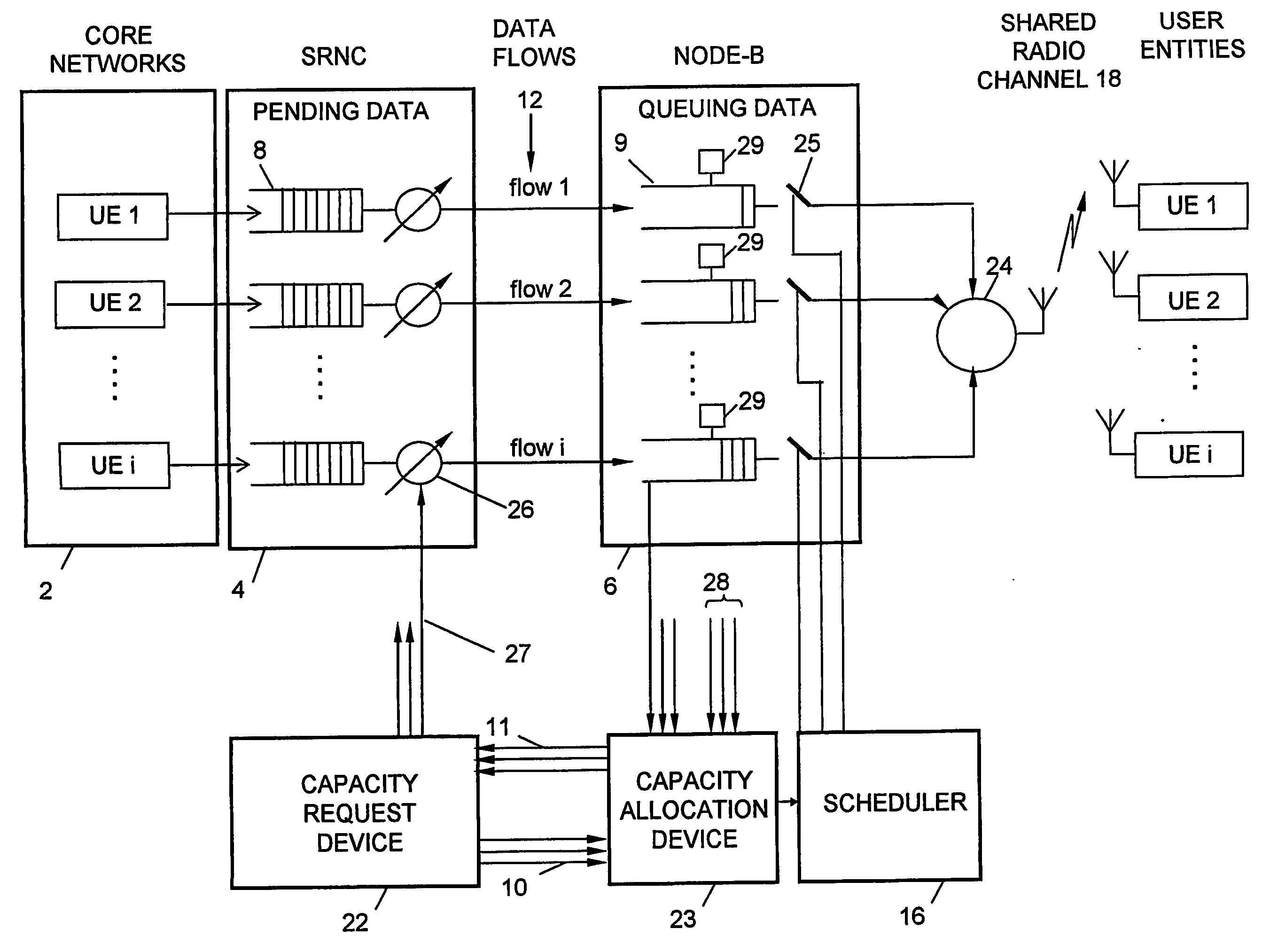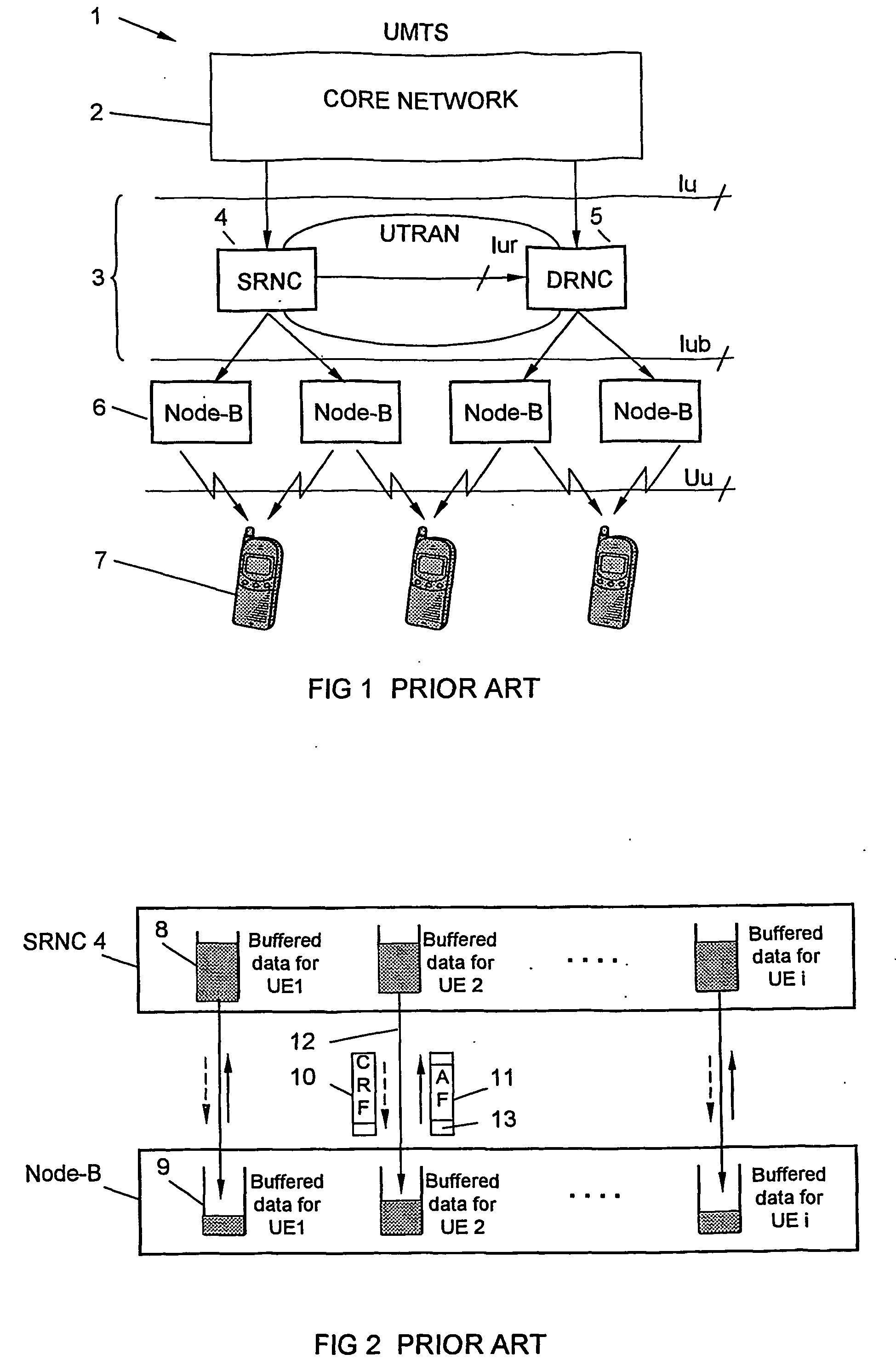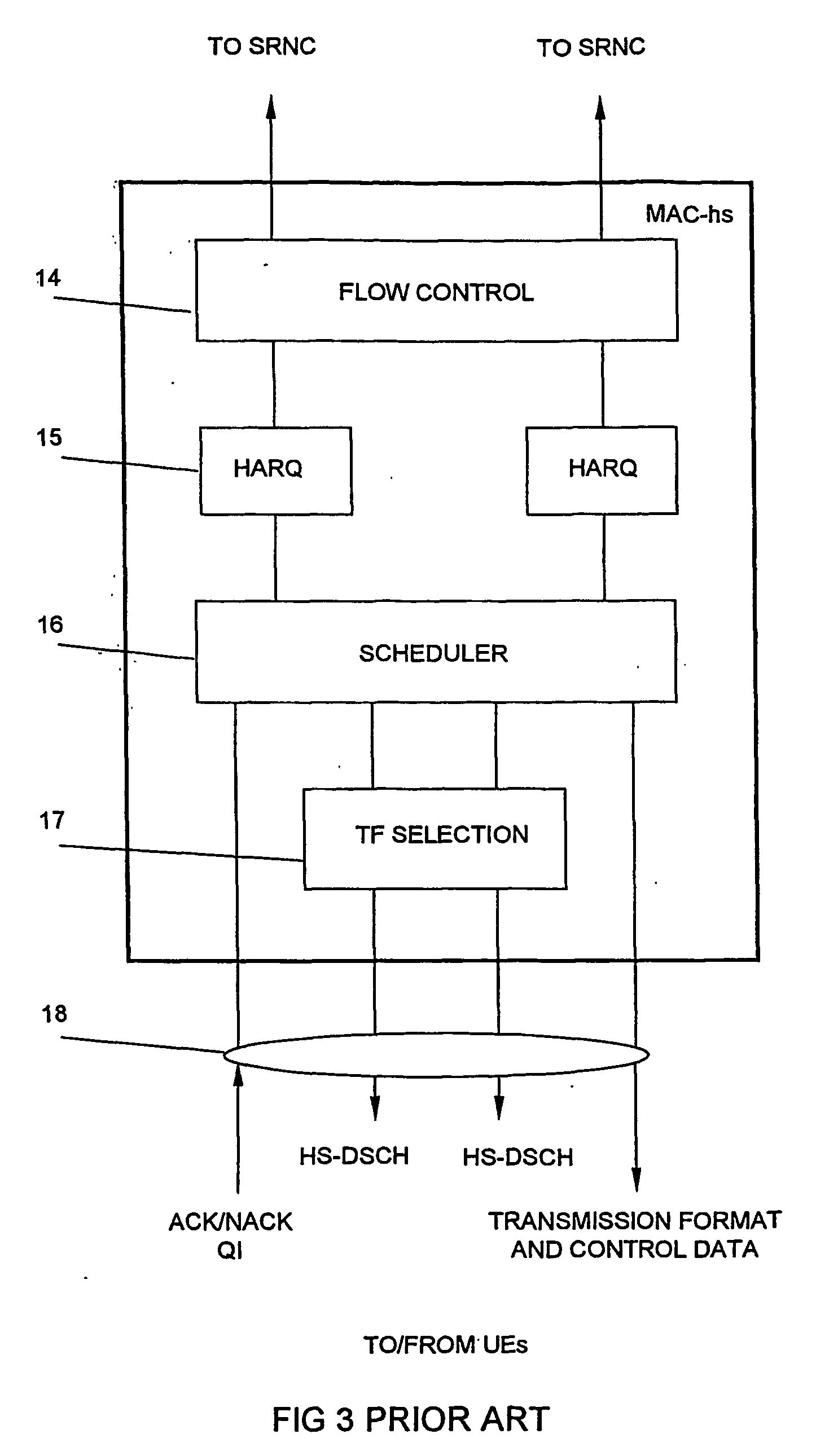Coordinated data flow control and buffer sharing in umts
a data flow control and buffer sharing technology, applied in data switching networks, store-and-forward switching systems, wireless communication, etc., can solve the problems of inability to send allocation frames too frequently, inability to use ub /sub>interfaces which are expensive to use, and inability to reduce memory requirements for node-b, improve communication reliability, and reduce memory requirements
- Summary
- Abstract
- Description
- Claims
- Application Information
AI Technical Summary
Benefits of technology
Problems solved by technology
Method used
Image
Examples
example 1
[0068] Refer to FIG. 6. Suppose the SRNC buffer has 100 MAC-d PDUs pending for transmission to a single user's buffer in Node-B. Suppose also that this single user's buffer has a total buffer capacity of 90 MAC-d PDUs and that, at the reception of the buffer request frame, 10 MAC-d PDUs are currently buffered in Node-B. Suppose also that Node-B, at three previous instants, has given SRNC 10, 20, and 30 credits (expressed in MAC-d PDU units). These 60 MAC-d PDUs are thus outstanding credits and the corresponding MAC-d PDUs have not yet been received by Node-B (for example due to delay in the transmission). The state of the single user's buffer in SRNC and in Node-B is illustrated at the top of the figure.
[0069] The arrow marked CAPREQ 100 represents step 1 in the per flow based flow control process and the arrow apex represents step 2. Step 3 is illustrated at the Node-B buffer. Of the total buffer space (90 MAC-d PDUs) 10 are occupied, leaving room for 80 MAC-d PDUs. Applying step ...
example 2
[0092] Refer to FIG. 7. Assume there are three UEs, each one having a respective buffer in Node-B as is indicated by the broken horizontal lines through Node-Bs buffer. Generally the same assumptions as made in Example 1 apply. The buffers in Node-B are filled to various individual levels. Adding these together indicates that Node-Bs buffer is filled with 10 MAC-d PDUs as in Example 1. Assume also that SRNC has different amounts of user data to send to the three UEs. If these amounts are added SRNC has a total of 100 MAC-d PDUs to send to the three UEs like in Example 1. The total memory space of the buffers in Node-B is, like in Example 1, 90 MAC-d PDUs. Finally it is assumed that UE1 and UE2 both have reported a channel quality indicator QI=0.8 indicating a good channel, while UE3 has reported a QI=0.4 indicating a less good channel. Also, the assumption in Example 1 apply, indicating that Node-B has a total predefined target level of 90 MAC-d PDUs.
[0093] Following steps 1-4iii i...
PUM
 Login to View More
Login to View More Abstract
Description
Claims
Application Information
 Login to View More
Login to View More - R&D
- Intellectual Property
- Life Sciences
- Materials
- Tech Scout
- Unparalleled Data Quality
- Higher Quality Content
- 60% Fewer Hallucinations
Browse by: Latest US Patents, China's latest patents, Technical Efficacy Thesaurus, Application Domain, Technology Topic, Popular Technical Reports.
© 2025 PatSnap. All rights reserved.Legal|Privacy policy|Modern Slavery Act Transparency Statement|Sitemap|About US| Contact US: help@patsnap.com



